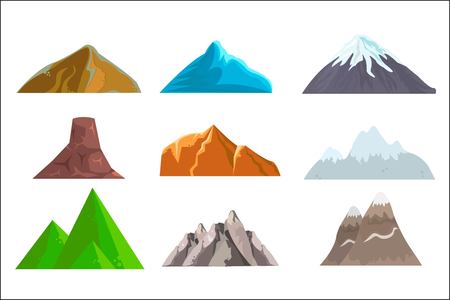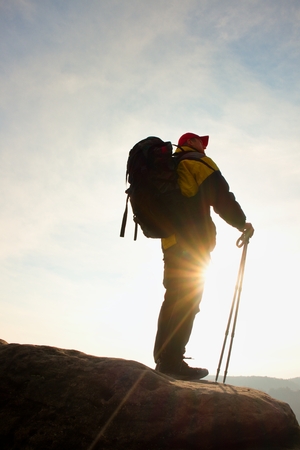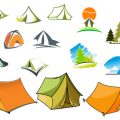Understanding Low Visibility and Fog in Indian Terrain
Trekking across Indias diverse landscapes, such as the majestic Himalayas, lush Western Ghats, and misty Nilgiri hills, presents a unique set of challenges when it comes to low visibility and fog. These conditions are especially common during the monsoon and early winter months, where thick clouds often shroud the trails, reducing visibility to just a few meters. In the Himalayan region, sudden weather changes can bring dense fog that obscures paths, ridgelines, and waypoints, making navigation difficult even for experienced trekkers. The Western Ghats and Nilgiris are known for their rolling hills covered in rainforest; here, early morning or late afternoon mists can settle quickly, creating slippery surfaces and hiding potential hazards like loose rocks or steep drops. Unlike some Western countries where trekking trails are clearly marked and maintained, Indian trekking routes may have fewer signboards or trail markers, increasing the risk of losing your way in poor visibility. Local wildlife, including elephants or leopards in some southern regions, can also become more unpredictable in foggy conditions. Understanding these unique aspects is crucial for anyone planning to trek in India’s incredible yet challenging terrains under low-visibility conditions.
2. Pre-Trek Preparations: Local Guidance and Weather Updates
Before embarking on any trek in India, especially in regions prone to low visibility and fog such as Himachal Pradesh, Uttarakhand, or the Western Ghats, thorough preparation is vital for safety. One of the most important steps is consulting with local guides—commonly known as sirdars or sherpas in the Indian trekking community. Their deep-rooted knowledge of the terrain, seasonal weather patterns, and culturally sensitive practices ensures a safer journey. Engaging local expertise not only enhances your understanding of the route but also supports the local economy.
Equally crucial is staying updated with weather forecasts from reliable sources. The Indian Meteorological Department (IMD) provides regular updates on regional weather conditions, fog warnings, and precipitation levels. Checking IMD’s website or mobile app before departure and during your trek can help you avoid potentially dangerous conditions.
Essential Gear for Indian Trails
Packing the right gear tailored to Indian terrains and climate conditions is another key aspect of pre-trek safety. Here’s a quick checklist to help you prepare:
| Item | Purpose | Indian Context Tips |
|---|---|---|
| Rainproof Poncho / Jacket | Protection against sudden monsoon showers and dense fog | Choose breathable material for humidity; quick-dry recommended |
| High-Visibility Headlamp / Torch | Navigation in low visibility/foggy trails | Carry extra batteries due to limited village supply points |
| Trekking Poles | Stability on slippery or uneven paths | Adjustable poles work best on varying gradients found in Indian routes |
| Whistle / Emergency Alarm | Signaling in case of separation from group in foggy areas | Traditional sirdars often use whistles—carry a backup for yourself too |
| Local Map & Compass/GPS Device | Aids navigation if electronic devices fail due to weather or signal loss | Obtain maps from local trekking shops or guides who know current trail conditions |
| Sufficient Water & Snacks | Avoid dehydration and energy loss during long stretches with poor visibility delays | Carry reusable bottles; stock up at villages where possible as remote trails may lack resources |
Cultural Note:
Respecting local customs and following advice from your sirdar or sherpa can make your trek smoother and safer. Always inform them about your daily plans and listen to their instructions regarding route changes due to unpredictable mountain weather.
Summary:
A successful trek in Indian conditions starts with respecting local knowledge, regularly checking IMD updates, and packing gear suited for unexpected weather shifts common in India’s diverse trekking landscapes.

3. Essential Gear for Indian Trekking Conditions
When trekking in India, especially in low visibility and foggy conditions common in the Himalayas and Western Ghats, it’s crucial to be well-prepared with the right gear. Indian trekkers commonly use a combination of locally available equipment and internationally recommended safety items to ensure their wellbeing on the trails. Below are some essential items you should always carry:
Reflective Clothing
Investing in reflective jackets or vests is highly recommended, as these make you more visible to fellow trekkers and rescue teams during dense fog or dim light. In India, many outdoor shops in cities like Delhi or Manali offer lightweight reflective rain ponchos and windcheaters suitable for monsoon and misty conditions.
Whistles
A sturdy whistle is an indispensable part of every Indian trekker’s kit. In case you get separated from your group or need help, blowing a whistle—especially the three-blast emergency signal—is a widely recognized way to alert others even when shouting is ineffective due to poor visibility or distance.
Torches (Flashlights)
Torchlights, locally called “torches” in India, are a must-have. Opt for headlamps with extra batteries so that your hands remain free while navigating tricky terrain. Reliable brands are easily available in trekking hubs like Rishikesh or Leh, and LED torches are preferred for their long battery life.
Laminated Trail Maps
Given unpredictable weather, carrying laminated trail maps is a common practice among seasoned Indian trekkers. These maps resist rain, mud, and tears—a crucial advantage during monsoon treks or high-altitude expeditions where mobile signals can be unreliable. Many trekking companies provide such waterproof maps for popular routes like Roopkund or Valley of Flowers.
Pro Tip:
Always check your gear before departure, and consider packing extras if traveling in remote regions where replacement supplies may not be readily available. Remember, being well-equipped not only ensures your safety but also enhances your overall trekking experience amidst India’s diverse landscapes.
4. Navigation Techniques in Foggy Indian Trails
Trekking in India, especially in regions like Himachal Pradesh, Uttarakhand, and the North-East, often involves navigating through thick fog and low visibility conditions. Understanding and adopting local navigation techniques can be a lifesaver.
Use of Cairns (Locally Called Chortens)
Cairns, also known as chortens in Ladakh and surrounding Himalayan areas, are stacks of stones built by locals and trekkers to mark trails. These serve as traditional waypoints to guide trekkers during poor visibility. Always look for these markers along the route; they are especially common on high-altitude passes or where the trail is less obvious. If you lose sight of one cairn, stop and look carefully for the next before proceeding.
Navigation Apps: Bhuvan and Others
Modern technology complements traditional methods. The Bhuvan app, developed by ISRO (Indian Space Research Organisation), provides detailed satellite imagery and offline maps specific to Indian geography—highly useful when fog blurs physical landmarks. Other apps like MapMyIndia or Google Maps can also be helpful, but ensure you download offline maps prior to your trek.
Comparison of Navigation Tools
| Tool | Strengths | Limitations |
|---|---|---|
| Cairns/Chortens | No battery needed, always accessible, culturally significant | May be obscured in snow or mist, gaps between markers can be large |
| Bhuvan App | Accurate Indian terrain data, works offline if preloaded | Requires smartphone and battery power, basic interface compared to global apps |
| Dhabas & Established Trails | Physical shelters, meet locals for guidance, food & rest options | Sparse in remote routes, may not exist on lesser-known treks |
The Importance of Staying on Established Dhabas and Trekking Routes
Dhabas—local trail-side huts found along popular trekking corridors—serve not only as rest stops but also as critical navigation points. These dhabas are often located at strategic junctures or clearings; straying from established paths between dhabas increases your risk of getting lost in fog. Stick to marked trails whenever possible; venturing onto unmarked paths can lead to dangerous terrain or wildlife zones.
Pro Tips:
- If unsure about your location, wait at a dhaba or near a chorten until visibility improves or help arrives.
- Inform local dhaba owners about your route—they often have valuable advice about weather patterns and safe passages.
- Avoid shortcuts through forests or ravines when visibility drops; stay on the beaten path used by locals and other trekkers.
Combining traditional markers like chortens with modern apps such as Bhuvan—and adhering to established dhaba routes—maximises your safety during foggy treks across Indias diverse mountain landscapes.
5. Group Safety and Local Communication Etiquette
When trekking in India’s mist-laden valleys or high-altitude fog, prioritising group safety is paramount.
The Buddy System: Never Trek Alone
Always trek with at least one partner – the buddy system is a golden rule in Indian trekking culture. It ensures that if someone faces difficulty in low visibility, help is immediately available. Partners can also double-check each other’s gear and health status, reducing risks significantly.
Listen to Local Porters and Guides
Respecting the advice of local porters and guides is not just a matter of courtesy but crucial for your safety. Their knowledge of the terrain, weather patterns, and cultural nuances is invaluable. If they ask you to halt, change route, or maintain silence (especially near sacred sites), follow their instructions promptly. In India, showing respect by addressing them as “bhaiya” (brother) or “didi” (sister) is appreciated and helps build mutual trust.
Communication Strategies in Poor Visibility
In thick fog, voice commands may not carry far. Use agreed-upon whistle codes or walkie-talkies if available. Always inform your group before separating, even briefly. Establish regular check-ins – every 10–15 minutes – to ensure no one lags behind. In case of separation, stay put and use loud, clear signals; do not wander further as this increases risk.
Cultural Sensitivity During Communication
Indian trails often pass through villages or near temples. Maintain polite conversation volume and avoid shouting unless necessary for safety. If seeking help from locals during foggy conditions, greet with “Namaste” and ask respectfully for guidance.
Remember:
Effective teamwork and cultural awareness keep your group safe and respected while trekking through India’s ever-changing mountain landscapes.
6. Emergency Protocols: Whom to Contact and How to Respond
Trekking in India’s diverse landscapes, especially during low visibility or foggy conditions, demands a clear understanding of emergency protocols. Being prepared to reach out for help can be life-saving. Here is a step-by-step guide tailored for trekkers navigating Indian trails:
Identify the Right Emergency Contacts
Local Police (Dial 100): The local police are your first point of contact in any emergency. They are familiar with the region and can coordinate immediate rescue efforts.
Indian Mountaineering Foundation (IMF): The IMF is the national body overseeing mountain rescue operations. Their expertise is invaluable for high-altitude or remote emergencies. Save their helpline number before your trek: indmount.org.
State Disaster Response Force (SDRF): Some states, like Uttarakhand and Himachal Pradesh, have specialized disaster response teams trained for mountain rescues.
How to Communicate Your Location
Use GPS Coordinates: Most smartphones allow you to share GPS coordinates through messaging apps like WhatsApp, which is widely used across India. If possible, send your exact location to responders.
Landmarks and Trail Markers: If GPS isn’t available, describe nearby landmarks, water sources, or trail signboards in local language or English. Indian authorities often use these references for navigation.
Accepted Signaling Methods in India
- Whistle Blasts: Three long blasts repeated at intervals is an internationally recognized distress signal and understood by most Indian trekking guides and rescue teams.
- Torch/Flashlight Signals: Use three quick flashes, pause, then repeat. This method works well at night or in dense fog.
- Bright Colours: Spread a bright jacket or tarp on open ground as a visual marker; this practice is common and effective in the Indian Himalayas and Western Ghats.
Cultural Tips When Seeking Help
- Respect Local Protocols: Address elders or village heads respectfully if you come across settlements. In rural India, local communities often assist trekkers and may guide rescuers.
- Bilingual Communication: Use simple English or Hindi phrases; regional dialects like Garhwali or Kannada might also be helpful in some areas.
If separated from your group, stay put unless moving improves your safety. Remain calm, conserve energy, and keep signaling at regular intervals until help arrives. Always inform someone about your itinerary before starting the trek—this small step can significantly speed up search efforts by Indian authorities if needed.


